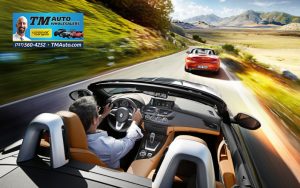
Vehicle maintenance is the single most important factor in your car’s life
As far as value is concerned, the old adage rings true: A car loses value as soon as you drive it off the dealership lot—up to 15% depending on the vehicle. It doesn’t stop there; by the time it’s four years old, the typical car retains only about half of its value. After that, however, the depreciation curve is much less steep. So buying a three or four-year-old car, which should still have years of dependability, makes plenty of sense. It’s even possible to buy a car of this age, drive it for a year and resell it with little or no loss in equity. In fact, the most cost effective way to own a car is to buy a used car that’s about 3- or 4-years old and drive it until it’s no longer driveable or worth the cost to maintain. Wait… maintain? Yes, all of the above hinges on your vehicle’s maintenance history. When properly maintained, a vehicle should easily last another six to eight years without needing any major repairs… emphasis on properly maintained. Sticking to a car maintenance schedule, and keeping good records of what you’ve done can help extend the life of your vehicle and protect you against breakdowns, expensive repairs, and other unwelcome surprises.
What is Your Car’s Maintenance History
With used cars, each has led a different life. Some may have been pampered, others abused. The best bet is often one owned by a trusted friend, family member, or original owner who can share details of the car’s history. Still, it’s smart to carefully look the car over inside and out, top to bottom and during daylight hours when paint flaws that may indicate repairs or other troubles can be readily spotted. Essentially, you’re looking to ensure the car is in the condition claimed by the seller. So what if you don’t know the owner?
Firestone in Chesapeake Va keeps an ongoing record of your car’s service and can provide you with a detailed print out for the year anytime you need it. This is especially helpful when it’s time to sell. Firestone will also begin reporting your car’s maintenance records to Carfax in the future, making it possible for potential buyers to order it online. Carfax vehicle history reports are one of the most reliable ways to search a car’s maintenance records. Many dealerships provide them free to customers but they can also be purchased for $39.99. Not all maintenance shops report your car’s repairs and maintenance to Carfax however. Carfax Shop Locator will give you a list of Carfax affiliated shops in your area. Carfax won’t list unreported accidents and repairs but will show you a history of the items listed below.
-
Major Accidents
-
Multiple Owners
-
Vehicle Service
-
Structural Damage
-
Open Recalls
-
Registration History
-
Mileage Rollback
-
State Owned
-
Total Loss
-
Rebuilt
-
Warranty Information
-
Flood Damage
-
Airbag Deployment
-
Mileage Rollover
-
Not Actual Mileage
-
Salvage Titles
-
Service History
-
Hail Damage
-
Branded a Lemon
-
Junked
-
Estimated Miles Driven Per Year
-
Last Reported Mileage
-
Length of Ownership
-
Commercial or Personal Use
A Regular Maintenance Schedule like this one is a great way to start!
SHORT TERM CHECK-UPS
OIL AND COOLANT LEVELS
Every month, or every few gas fill-ups and especially before any longer road trips, it’s a good idea to get under the hood of your car and inspect both the oil and coolant levels while the engine is cool. Low levels of either can lead to engine problems if left unchecked. Refer to your owner’s manual to locate both on your specific vehicle.
AIR FILTER
Your engine’s air filter is what regulates the air that flows into your engine and helps keep out debris and particulate. By making certain that your air filter is flowing properly, you can improve your fuel efficiency, decrease your emissions, and help ensure the life of your engine. This can be done easily at home, so check your owner’s manual for instructions and how often it needs to be changed.
TIRE PRESSURE AND TREAD DEPTH
Since well-maintained tires are integral to a safe, fuel-efficient ride, make it a habit to visually inspect your tires often. Check the pressure in your tires every month, and before long trips or carrying extra load. Don’t forget the spare. A tire pressure gauge will be needed to check your tire pressure. Also, during the colder months, note that tire pressure drops one pound with every 10 degree decrease in pressure. Your owner’s manual will tell you how much air pressure your tire needs. You can check your tread depth using the simple penny method.
HEADLIGHTS, TURN SIGNALS, BRAKE, AND PARKING LIGHTS
It’s important that the lights on your vehicle are properly functioning, but oftentimes it can be easy item to overlook. Once a month, turn on your headlights when you’re parked in front of a flat surface and check that both headlights are working properly and well-positioned. Walk around your car and visually inspect both turn signals and your parking lights. Have a friend stand behind the car while you engage the brakes to be certain that your brake lights are functional.
OIL & FILTER
The motor oil in your vehicle’s engine serves a whole slew of functions: it lubricates the moving parts, helps act as a sealant against debris, cools the engine, reduces wear and tear, and helps prevent engine corrosion. Keeping it clean is vital for good engine health. Depending on your car and what kind of oil you’re using, you may need to change both the oil & oil filter as much as every 3 months or 3000 miles. Many newer vehicles’ owners’ manuals will recommend changing your oil less frequently – often in-between 5,000 and 10,000 miles. Check your vehicle owner’s manual and consult with a professional to be certain what is appropriate for your vehicle.
ROTATE TIRES
Depending on your vehicle alignment, usage, and many other factors, the tread wear patterns on your tires may vary between the front and back tires, or even from one side of the tread to the other. Rotating your tires will help to extend the service life of your tires by more evenly balancing the tread wear, and helping prevent noise and vibration problems.
WAX VEHICLE
Making certain to wax your vehicle every six months after washing it won’t just keep it shiny, it’ll also help to keep both the paint in good shape and reduce the chance of rust. Many irritants such as dust, sand, and salt can build up and environmental factors like ozone and ultraviolet light can cause microscopic damage, but waxing can help minimize this by forming a protective seal to extend your paint’s life.
LONG TERM CHECK-UPS
TRANSMISSION FLUID
Much like the oil in your engine, transmission fluid is a lubricant that helps keep all of the moving parts inside of your transmission functioning properly. Whether you’re driving an automatic or manual transmission vehicle, it is essential that you have your transmission fluid checked and changed when needed to avoid costly transmission damage or replacement. Follow the vehicle manufacturer’s recommendations.
TRANSFER CASE FLUID
In four-wheel or all-wheel drive vehicles, the transfer case is what shifts power from the transmission to the axles. You’ll need to have the transfer case fluid checked according to the vehicle manufacturer recommendations to make certain that it is properly filled and leak-free. This will require you getting under the vehicle, so bringing it into a professional is recommended.
INSPECT SHOCKS AND STRUTS
The shocks and struts on your car function to control the impact and rebound as your vehicle passes over bumps in the road and are an essential part of your auto’s steering system. They should be inspected by a professional every 50,000 miles or bring your car to the shop if you notice a decrease in smoothness or loss of control when driving.
COOLANT FLUID EXCHANGE
The radiator in your car is a vital component that helps keep your engine cool and functioning properly. Having your coolant system flushed regularly will help get rid of contaminants that can build up inside as well as ensure that your radiator is filled to a proper level. Check your vehicle manufacturer’s recommendation to find out how often your coolant should be exchanged,
SPARK PLUGS
The spark plugs in your engine ignite the gas and air mixture that ultimately powers your vehicle . If your spark plugs aren’t functioning properly, your engine will lose power and won’t run at optimal capacity. Have a professional check and replace any faulty spark plugs depending on vehicle mfr recommendations or when you feel a decrease in your engine’s power.
SERPENTINE BELT
Although may seem like a simple piece of rubber, your vehicle’s serpentine belt is essential to keeping your car running by powering peripheral devices such as your alternator, power steering pump, and air conditioner compressor. Visually inspect the belt to ensure that it is free of cracks or other wear and tear. Replace id damaged or according to your vehicle manufacturer’s recommendation.
FRONT AND/OR REAR DIFFERENTIAL
The differentials are devices that split the torque—or power—from the engine and allow it to send power to the tires. In front or rear-wheel drive vehicles, there is only one differential, but in 4-wheel and all-wheel drive vehicles, there is both a front and rear differential, and possibly even a center differential. Like many parts of your vehicle, the differentials need to be kept lubricated to ensure proper functionality. Have a professional check and change fluid whenever your vehicle manufacturer recommends it.
SEASONAL CHECK-UPS
The needs of your vehicle can vary by season and driving conditions. Following are a few suggestions to add to the notes section of your vehicle maintenance checklist:
REPLACE WINDSHIELD WIPERS
Windshield wipers need to be replaced about once every year, or whenever the effectiveness is compromised. In winter months, it could also be a good idea to install winter wiper blades for optimum performance. You should also pull your wipers away from the window when parked during the winter to prevent ice buildup.
BATTERY PERFORMANCE CHECK
Your car battery is one of the most important components for your vehicle to run. A car battery supplies large amounts of electrical current for the starter, engine and other electronic accessories in the vehicle. Extreme temperatures affect the performance of the battery so regular battery testing will ensure that battery will perform when you need it to.
CHANGE TIRES
Depending on where you live and the winter driving conditions you might encounter, you might want to switch your tires in cold, snowy months to a winter/snow tire. When the temperature hovers at or below freezing consistently, the tire compounds in non-winter tires hardens, decreasing traction and handling performance while increasing braking distance. Winter tires have tread patterns and compounds designed to remain soft in the cold and provide grip in snow, slush, and icy driving conditions.
CHECK COOLANT LEVELS
It’s also important to check your antifreeze levels in your radiator in winter months to keep your radiator or engine components from freezing. A 50/50 mix of antifreeze to water is generally recommended, but check your owner’s manual or with a professional to be certain.
Overall, car dependability has improved considerably over the past decade. A five-year-old vehicle is likely to have about a third fewer problems than one would have had a decade back. Engine, transmission and exhaust problems, which once plagued older cars, have decreased dramatically, according to automotive research groups. Do your homework when buying used and request a Carfax. It’s invaluable when it comes to confirming background information on any used car, truck, or SUV. If the dealer can’t or won’t provide a Carfax, keep looking. Once you’re in the driver’s seat, do your monthly maintenance and drive it until the wheels fall off.
Have questions? Call or text Mike Love at (757) 560-4252, I have answers!
![]() TM Auto Wholesalers, Chesapeake Va
TM Auto Wholesalers, Chesapeake Va
Sources:
Staff “The Ultimate Car Maintenance Checklist” www.bridgestonetire.com Web. Retrieved from: https://www.bridgestonetire.com/tread-and-trend/drivers-ed/ultimate-car-maintenance-checklist
Staff “service shops” www.carfax.com Web. Retrieved from https://www.carfax.com/Service-Shops




 be considered the first American made pickup truck — the gas powered Ford Model TT. Chevrolet answered back In 1918 with the Model 490. In 1925 Ford edged ahead of Chevrolet with the Ford Model T Runabout factory-built pickup, equipped with a four-cylinder 40 horsepower engine. Chevrolet answered with the
be considered the first American made pickup truck — the gas powered Ford Model TT. Chevrolet answered back In 1918 with the Model 490. In 1925 Ford edged ahead of Chevrolet with the Ford Model T Runabout factory-built pickup, equipped with a four-cylinder 40 horsepower engine. Chevrolet answered with the 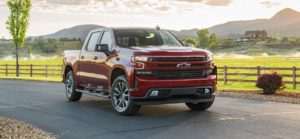
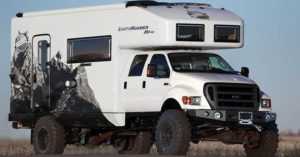 Diesel
Diesel
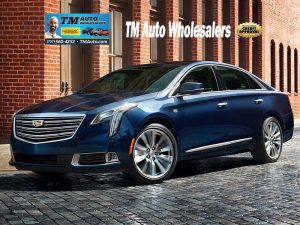 A new car purchase is exciting, there is nothing quite like the moment you drive off in your new car! It’s the same for all of us, what is there not to love? Well, you probably won’t love the price tag or the drop in value within the first 1-5 years. In fact, that car will be worth 20-30% less within 12 months, that’s a $15’000 loss on the average luxury car! Could you have used that cash?
A new car purchase is exciting, there is nothing quite like the moment you drive off in your new car! It’s the same for all of us, what is there not to love? Well, you probably won’t love the price tag or the drop in value within the first 1-5 years. In fact, that car will be worth 20-30% less within 12 months, that’s a $15’000 loss on the average luxury car! Could you have used that cash? 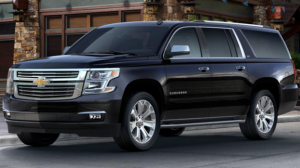
 Ok, let’s say you’ve had a car accident, thankfully no one was hurt! Oh, actually, your car is hurtin’ pretty bad and you think it might be totaled; sadly, this is often the case. Is it really totaled? Well let’s see, did the airbag deploy? Is there damage to more than one side of your car? Is it driveable? If one or more of these answers is ‘yes’, it is safe to say it’s totaled. Depending on your situation, this could be good or bad but either way you need to get educated. So how do insurance companies determine whether your car is a total loss?
Ok, let’s say you’ve had a car accident, thankfully no one was hurt! Oh, actually, your car is hurtin’ pretty bad and you think it might be totaled; sadly, this is often the case. Is it really totaled? Well let’s see, did the airbag deploy? Is there damage to more than one side of your car? Is it driveable? If one or more of these answers is ‘yes’, it is safe to say it’s totaled. Depending on your situation, this could be good or bad but either way you need to get educated. So how do insurance companies determine whether your car is a total loss?

 Can one have too many cars? Well, as a used car dealer my knee jerk reaction is…, never! I mean I have around 20-30 at all times and seldom drive the same one two days in a row, it’s great! Ok, I get that I might possibly be a little tiny bit bias but still, is that something that people are concerned with? Should we be considering the risks of owning too many cars or is there even such a thing?
Can one have too many cars? Well, as a used car dealer my knee jerk reaction is…, never! I mean I have around 20-30 at all times and seldom drive the same one two days in a row, it’s great! Ok, I get that I might possibly be a little tiny bit bias but still, is that something that people are concerned with? Should we be considering the risks of owning too many cars or is there even such a thing?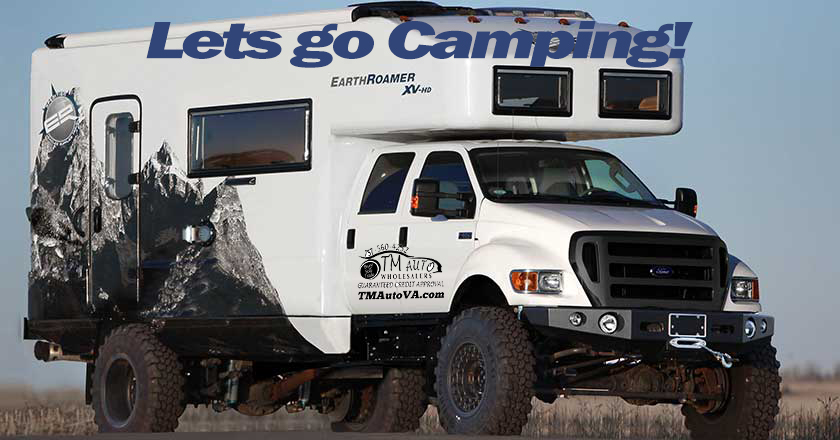 When I say camping, we all get a different visual. Some folks see rocky trails that their 4×4 must carefully navigate to reach a lone peak at the top of a mountain where no human in their right mind would attempt to set up a tent… and they love it! My version is backing up to our camper, plugging in the life support, filling up the truck with diesel, and hitting the open road in search of an exciting man made forest with all the amenities that my family and I could possibly imagine! Any way you see it, camping or just leaving to go anywhere on an adventure is fun! Something about leaving the convenience of our homes and day-to-day routines that makes us all feel alive.
When I say camping, we all get a different visual. Some folks see rocky trails that their 4×4 must carefully navigate to reach a lone peak at the top of a mountain where no human in their right mind would attempt to set up a tent… and they love it! My version is backing up to our camper, plugging in the life support, filling up the truck with diesel, and hitting the open road in search of an exciting man made forest with all the amenities that my family and I could possibly imagine! Any way you see it, camping or just leaving to go anywhere on an adventure is fun! Something about leaving the convenience of our homes and day-to-day routines that makes us all feel alive.

